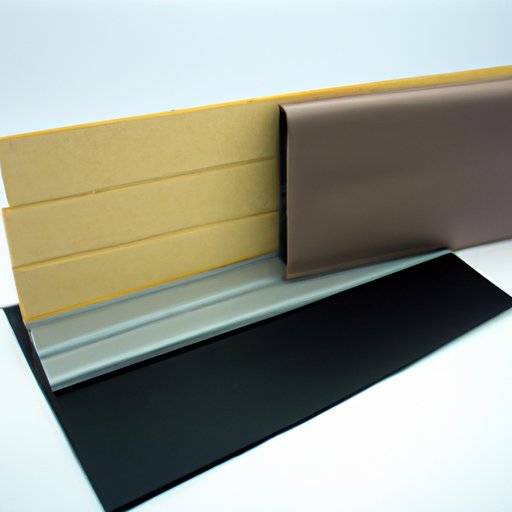
I. Introduction
Doors are often the weakest link in a room’s soundproofing. If you’re looking to reduce noise from traffic, noisy neighbors, or any other source, soundproofing your door is a crucial step. In this article, we’ll explore how to soundproof a door effectively and affordably.
II. Start with the basics
Soundproofing your door has numerous benefits, including improved privacy, productivity, and comfort. Sound travels through air, which means any gaps or openings in your door will allow noise to penetrate your room. Doors are one of the most common sources of sound leakage in a room to address this problem, we need to understand how sound travels through doors and how to plug the gaps.
III. Install weatherstripping around the door frame
One of the easiest ways to soundproof a door is to install weatherstripping around the frame. Weatherstripping is essentially a seal that prevents air and noise from entering or leaving your room. It can also help to increase the energy efficiency of your home. There are various types of weatherstripping available, including self-adhesive foam tape, V-strip, and door sweeps.
IV. Install soundproofing curtains
Sound-absorbing curtains are another useful tool for soundproofing a door. These curtains are designed to absorb sound, which can help reduce noise from outside your room. Not only do they look great, but they are also easy to install. All you need is a curtain rod and some hooks or rings to hang them.
V. Install a door sweep
A door sweep is attached to the bottom of your door and helps block noise from coming in. They come in various types, including door sweeps made of rubber, silicone, or nylon brush. Installing a door sweep is relatively easy, and most come with an adhesive strip that you can attach to the bottom of the door.
VI. Add mass to the door
Hollow-core doors offer little sound insulation and are one of the weakest links in your room’s soundproofing. Upgrading to solid-core doors can significantly improve soundproofing. However, if you don’t want to replace your door, there are other ways to add mass to your existing door. For example, you can install Mass Loaded Vinyl (MLV), which is a dense material that is highly effective at blocking sound. You can also add a layer of drywall or sheet lead to the door.
VII. Use acoustic panels
If other methods aren’t enough to soundproof your door, you can try using acoustic panels. These panels are designed to reduce noise by absorbing sound waves and preventing them from bouncing around your room. To install panels on your door, you’ll need to attach them to the surface with an adhesive or adhesive strips. For best results, cover as much of the door surface as possible with the panels.
VIII. Final touches
Once you’ve soundproofed your door, you may still find that noise is leaking through gaps around outlets and light fixtures. To address this problem, use a sealant like putty or caulking to fill any gaps. You can also use a draft guard to cover keyholes or letterbox flaps.
IX. Conclusion
Soundproofing your door can significantly improve the quality of your life by reducing noise pollution. Whether you use weatherstripping, soundproofing curtains or acoustic panels, soundproofing is a step that is worth taking. By following the tips outlined in this article, you can soundproof your door affordably and effectively.





